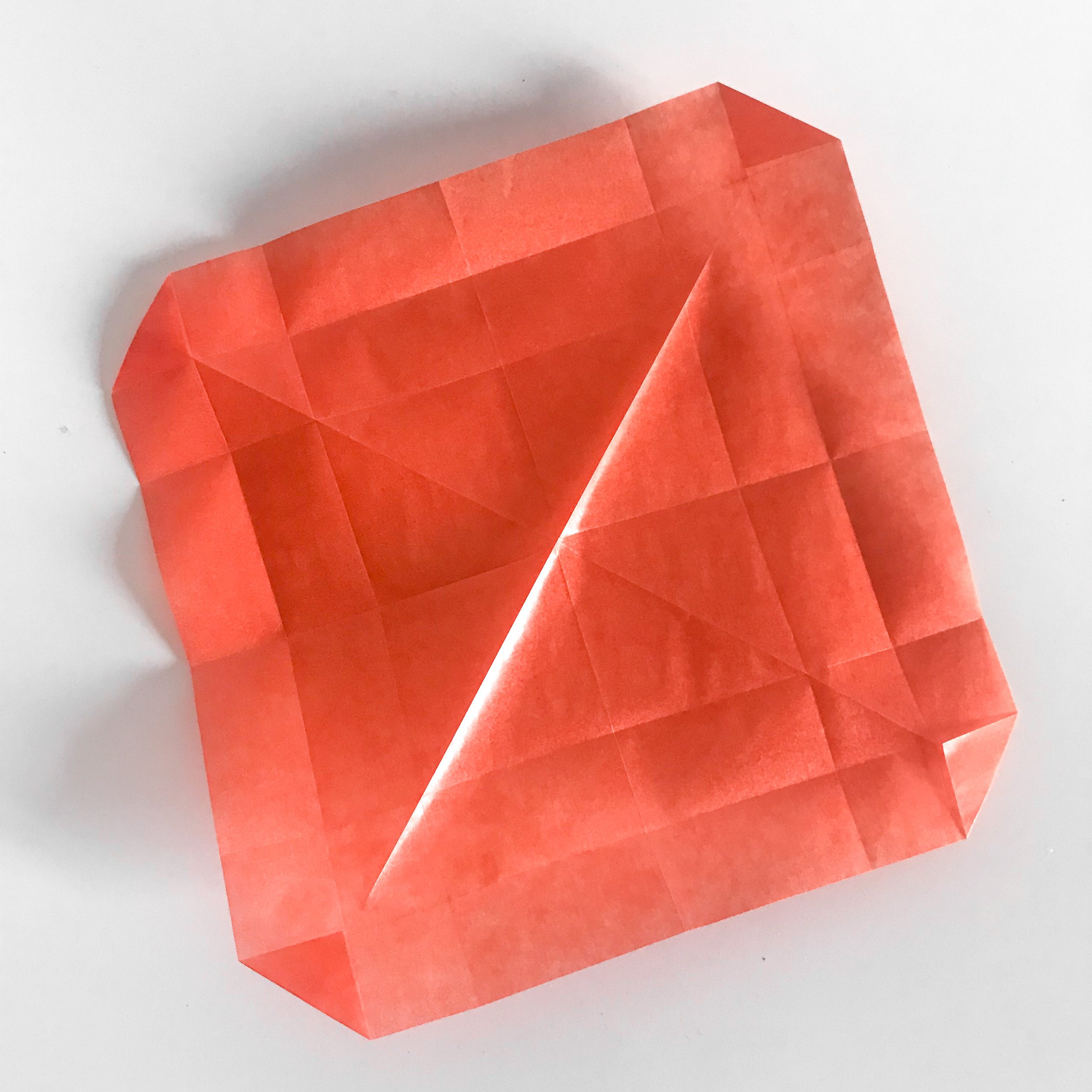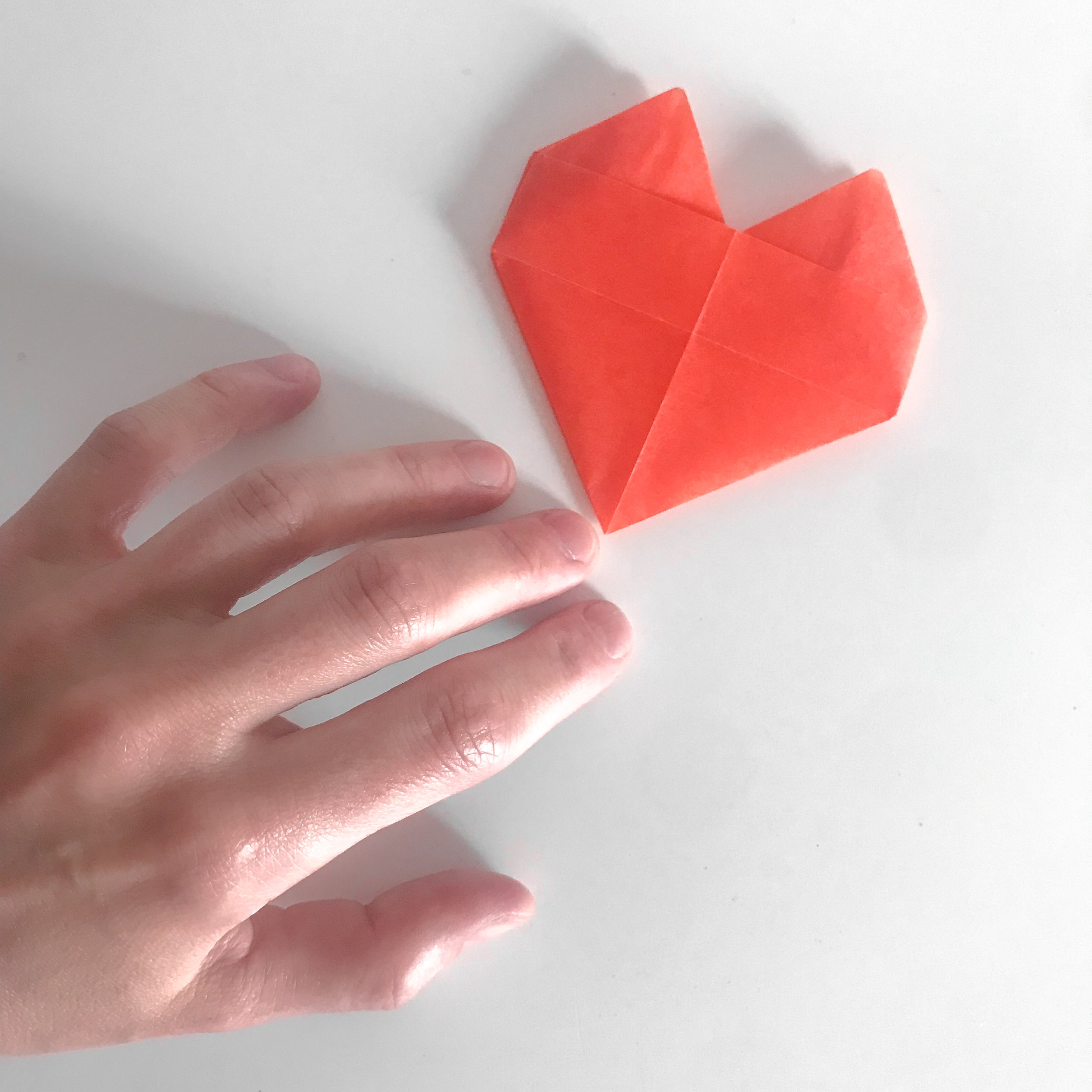The Essay
Constructing a heart out of paper requires one square piece of paper and some attentive care. For many people, it will be a relaxing and satisfying process of micro-creation. Taking just a few minutes to complete, it can fill a free moment—or a whole afternoon, or an entire person—with dazzling wonder. Ephemeral, lasting, whimsical, symbolic, it’s whatever you allow it to be.
Constructing a functioning heart out of the broken pieces of one’s own heart, on the other hand, requires much, much more effort and of course incomparably more time, but it is fundamentally a similar process. Proceed gently. Hold what needs holding. Coax things into place. Make certain decisions permanent, but only when you’re ready. Start over as many times as you have to, but trust yourself to get it right eventually. You might find that here, too, paper plays a central role, because to write—with courage and in longhand—about the state of your heart is one of the most reliable things you can do to help mend it.
Even if writing isn’t for you, paper might help ease your heartache. After all, a hurting heart needs time to heal. One must wait—a week to catch your breath, maybe, a month to catch your stride— and origami is a peaceful and involving way to let the hours go by while you stay gently occupied, occasionally perplexed, and repeatedly charmed. The rustling sounds, too, are quite an easement.
I’ve written of easements before. Back then my grief was about losing the right person—not about leaving the wrong one—but loss is loss, just the same.
The Addendum
If the kind of writing I mentioned above is something you might like to try, consider using the biggest sheet of paper you can find and writing the words SAFE, SEEN, and SOOTHED on it in large, beautiful letters. Why? The more you’re able to provide yourself with these three loving foundations, the less likely you’ll be to wind up in the kind of relationship that leaves you disoriented and depleted. Next, invite yourself to start scribbling wildly in that satisfying manner of mind maps with their fluid logic and loose connections.
Begin by investigating what you can do to help you feel more safe in your life. Safe from unkindness, abuse, shame, resentment, regret. Safe from feeling overwhelmed, over-commited, and powerless. Every idea you have—every boundary you’re ready to hold around your time, space, mind, body, resources, and privacy—write it down.
Next, ask how you yourself can give yourself the pleasure of being seen (and heard, and admired). How do you express your thoughts, feelings, beliefs, values, and creativity? What do you hold sacred? What do you sometimes do in a state of flow? These are the things you occasionally show the world, and then possibly you notice conflicting feelings of pride, gratitude, and vulnerability. Imagine the comparative ease you might come to feel when the focus on you is your own.
Finally, take inventory of the ways you already know how to self-soothe—and feel free to brainstorm what else might ease anxiety, melt away tension, and help you calm a nervous nervous system. Showers might be on your list (hot or cold), as might certain ways of breathing and moving your body. Fresh bedsheets, the scent of cedar, this song, and hot jasmine rice with ghee are on mine.
Once you’ve freed all this wisdom you already had in you, embark on the rest of your life by giving the beautiful mess of notes in front of you your own curious, tender attention. You may find you are feeling truly seen, even though—and likely because—the one doing the seeing is you. And what you’re seeing may give you a nice stable feeling about the things you can do from now on to create more safety for yourself in your everyday life. You might even notice how this nice stable feeling itself is a feeling of safety. And now maybe your breath will deepen and slow, your jaw will relax, your hands will feel warm and dry. That’s your lesson that another way to self-soothe is to enter your dark place through the wound and let in the light.
The Backstory
One year ago on Valentine’s Day I was so overwhelmed with my early infatuation, I’m not sure that acknowledging Valentine’s Day even registered on my love-drunk radar that day. The holiday fell on the second Sunday in February, which was when Polish tennis pro Iga Świątek played Simona Halep at the 2021 Australian Open. (Iga lost.) This matters because making sense of past dates and places is one of the ways I keep myself safe in the present, I have learned. So when my brand-new beau and I popped over to my mother’s house for an inaugural hello, the match was on and introductions took a back seat to the church of tennis. On that day—and every day for the long, long month of February—I was a container for all of the world’s hope and gratitude. Triumphant and young again, I had found it all, at long last.
One exhausting, expensive year later, I again feel as though I’ve found it all—but now my all is the shards in my flesh, new and old, the pieces to pick up. I am not drunk on love, I am the embodiment of sober reckoning. If I were an illustration, I would be a dusty smudge at the foot of a mountain.
I am hurt. I am stunned. I am disappointed. But I am not weak. I am not miserable.
My new perspective on a year’s worth of accelerating shame and confusion is, amazingly, helping me rearrange regret into relief. I was not the problem I imagined I was. Instead, my problems began and ended with some false beliefs and some crucial blind spots. Which ones? That is the question. Luckily it’s one I’ve been able to answer all the way back to my earliest memories. You know, the ones that explain why as an adult I’ve not managed to fill my own hunger for feeling safe, seen, and soothed. That’s changing now. I feel it in the broad strong wings of my shoulder blades, in my glowing sternum, and in my vocal apparatus, which has taken on a new resting softness that suggests there’s nothing I need to explain to anyone.
Happy Valentine’s year, Natalia. Your heart is in your hands now—and I’m not worried about a thing.



